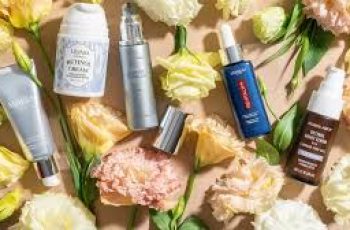
Salicylic acid is one of the most trusted skincare ingredients globally, especially for those struggling with acne, blackheads, and oily skin.
This beta hydroxy acid, or BHA, is renowned for its unique ability to penetrate deep into pores, exfoliate dead skin cells, and combat inflammation, making it a staple in many skincare routines.
But a common question many ask is: can you safely leave salicylic acid on your face overnight? Does it work better this way, or could it cause unwanted dryness and irritation?
In this article, we will explore the benefits, risks, and best practices of using salicylic acid during your nighttime routine.
Salicylic acid is derived from willow bark and belongs to the beta hydroxy acid family.
Unlike alpha hydroxy acids, which are water-soluble and work primarily on the skin’s surface, salicylic acid is oil-soluble.
This property allows it to dissolve in the oily substance that clogs pores, meaning it can penetrate deeply to exfoliate the inside of the pores and remove excess sebum and debris.
This is why it’s especially effective for oily and acne-prone skin types, which tend to suffer from clogged pores and breakouts.
Using salicylic acid overnight can maximize its benefits by giving the ingredient more time to work on the skin.
While some exfoliating acids are better suited for daytime use with SPF protection, salicylic acid can be left on the skin safely overnight at appropriate concentrations.
Many dermatologists recommend using salicylic acid products in the evening as part of a cleansing or treatment step to reduce acne and improve skin texture gradually.
The typical concentration of salicylic acid in over-the-counter skincare products ranges from 0.5% to 2%. At these levels, it’s safe to leave the product on your skin overnight.
You might find salicylic acid in cleansers, toners, serums, moisturizers, or spot treatments, and each product type will stay on your skin for varying lengths of time.
Cleansers rinse off quickly, while serums and moisturizers remain longer, providing prolonged exfoliation.
If you are new to salicylic acid, it’s best to start slowly. Begin by applying the product every other night or even less frequently, allowing your skin to build tolerance.
Overuse or applying too strong a concentration right away can cause irritation, dryness, redness, and flaking.
These symptoms typically indicate that your skin barrier is compromised, so it’s important to listen to your skin and adjust usage accordingly.
Some people worry about dryness or sensitivity from salicylic acid, especially when used overnight.
While this acid exfoliates the skin, it also has anti-inflammatory properties that soothe redness and calm irritated skin. Still, balancing exfoliation with hydration is key.
Combining salicylic acid with moisturizers containing hydrating ingredients like hyaluronic acid or ceramides can help maintain skin moisture and reduce the risk of dryness.
It’s also important to note that not all salicylic acid products are designed for overnight use.
Professional treatments such as chemical peels or medical-grade salicylic acid formulas often contain much higher concentrations, sometimes as high as 15% or more.
These are not intended to be left on overnight, as they can cause significant peeling, burning, or damage if misused.
Always follow product instructions carefully and consult a dermatologist before using stronger formulas.
One of the standout benefits of salicylic acid is its ability to clear blackheads and whiteheads.
Because it breaks down the excess sebum and dead skin that clog pores, regular use can reduce the frequency of these stubborn blemishes.
Leaving salicylic acid on your skin overnight allows it to continue dissolving these blockages, which can lead to smoother, clearer skin over time.
In addition to physical exfoliation, salicylic acid’s antibacterial properties help reduce the number of acne-causing bacteria on the skin.
This dual action prevents new breakouts and helps heal existing blemishes.
When used consistently as part of a nightly routine, salicylic acid can make a visible difference in skin clarity and texture within 6 to 8 weeks.
For those with sensitive or dry skin, salicylic acid may be too harsh if used every night.
These skin types should consider using the acid only a few times per week and avoid leaving it on all night initially.
Patch testing before full application is always recommended: apply a small amount to the inner forearm or behind the ear and wait 24 hours to check for any adverse reaction such as redness or irritation.
When incorporating salicylic acid into your routine, be mindful of your skin’s pH balance. Salicylic acid works best in slightly acidic environments (pH 3 to 4).
Layering multiple acidic products or combining with other exfoliating acids like glycolic acid without proper spacing can disrupt your skin barrier and cause irritation.
Salicylic acid can be used in the morning or at night, depending on your skin type and other products in your routine.
Oily and acne-prone skin often benefits from twice-daily application, keeping pores clear and controlling oil production throughout the day.
If used in the morning, applying a broad-spectrum sunscreen with SPF 30 or higher is essential since exfoliating acids can increase photosensitivity.
One common concern is whether salicylic acid works quickly enough to be worth the investment.
While some improvement in redness or minor breakouts may be seen within a week or two, significant results in acne control and pore clearing generally take 6 to 8 weeks of regular use.
Patience and consistency are crucial, as with most skincare treatments.
A phenomenon called “purging” can occur when first using salicylic acid, where you might notice an increase in breakouts or irritation.
This happens because the acid accelerates skin cell turnover, pushing clogged impurities to the surface before clearing them away.
Though uncomfortable, purging is often a sign that the product is working; however, if irritation becomes severe or prolonged, discontinue use and consult a professional.
Hydration and sun protection are two vital factors to consider when using salicylic acid. Always apply a moisturizer suited to your skin type to support the skin barrier and prevent excessive dryness.
Daily use of sunscreen is also mandatory, even if you only apply salicylic acid at night, because damaged skin is more vulnerable to UV rays.
Some users combine salicylic acid with other acne-fighting ingredients like benzoyl peroxide or retinoids. While this can enhance results, it must be done carefully.
These ingredients can increase skin sensitivity and dryness, so spacing out applications and monitoring your skin’s response is essential.
If you’re unsure about adding salicylic acid to your regimen or if it’s suitable for your skin type, consulting a dermatologist or skincare professional is the best course of action.
They can recommend appropriate products and usage frequency tailored to your unique skin needs.
In summary, salicylic acid is a powerful, effective ingredient that can be safely used overnight at proper concentrations, especially for oily and acne-prone skin.
Its ability to exfoliate deep into pores, reduce inflammation, and prevent breakouts makes it a valuable addition to any skincare routine aiming for clearer, healthier skin.
For sensitive or dry skin, use salicylic acid cautiously, starting with lower frequency or concentration and always combine with hydrating products.
Avoid leaving on high-strength professional treatments overnight and seek professional advice for such formulas.
With regular use, patience, and the right complementary skincare, salicylic acid can significantly improve your skin’s texture, clarity, and overall health.
Always remember to protect your skin with sunscreen and maintain hydration to support the skin’s natural barrier.
If you want to learn more about salicylic acid and how it can benefit your skin, check out detailed resources or consult with a skincare expert who can guide you toward the best products and routines for your skin type and concerns.


